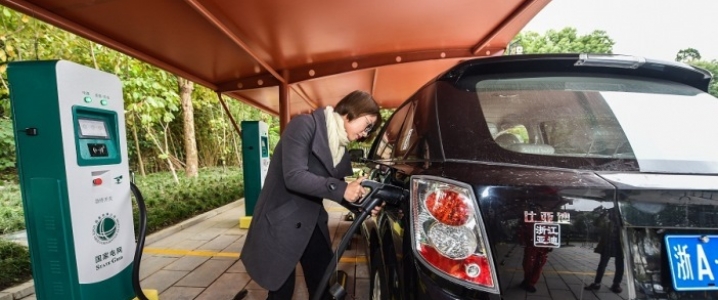China is looking to boost its energy storage market and projects as it adds growing renewable power capacities. At the end of last year, the Chinese authorities issued a unified nationwide policy to boost the energy storage industry that has been lagging behind other countries despite the fact that China is leading global investments in renewable energy.
Also thanks to the central government policy boost, and to some regional storage policies, China added nearly as much battery storage capacity in the first half of 2018 as it had in total at the end of 2017, according to data by the China Energy Storage Alliance (CNESA).
Between January and June, new energy storage projects of various scale and capacity were announced in the provinces Jiangsu, Henan, Qinghai, and Guangdong. Those projects—including planned, under construction, or already operational—total 340.5 MW. That’s almost as much as the entire Chinese capacity that was operational as of the end of last year—389.4 MW.
So far this year, the newly operational capacity has already surged by 281 percent compared to the entire new capacity for the whole of 2017, the Chinese Alliance says.
“If the entirety of this new capacity begins operation on schedule, China’s domestic energy storage market will see an amount of growth that will make 2018 one of the most significant years yet for the industry,” CNESA said.
The growth looks impressive, but compared to China’s population, territory, and renewable installations, 340.5 MW is not that big of a figure and doesn’t include storage technology for electric vehicles, of which China built 40 GWh worth of batteries in 2017, Quartz reports.
Related: Will Saudi Arabia's Geopolitical Strategy Backfire?
In energy storage, China hasn’t been a big market player and developer, but according to a GTM Research report on global storage deployments, in five years China could surpass almost everyone except for the United States.
“It’s a bit surprising that China hasn’t adopted storage any faster, because it has all the right ingredients to be a major storage market,” Ravi Manghani, energy storage director at GTM Research, said.
Last year, the United States led the pack in terms of energy capacity, with 431 megawatt-hours (MWh) deployed. Australia—which was the 2017 leader in power capacity deployment—came in second on the energy storage metric, followed by Germany, China, and Japan, GTM Research said. By 2022, China will bump Australia from its #2 spot, according to the projections in the report. China has the supply chain to significantly boost its battery storage. Still, by 2022, the United States will remain the leader and will have installed cumulative power and energy capacity two times higher than China’s, GTM Research reckons.
China is also expanding its battery manufacturing base for EVs and e-buses, which could be used for grid-scale applications, the GTM analysts said.
Related: India’s Coal Reliance Deepens
In EV manufacturing and EV sales, China is a global leader. According to a report by Bloomberg NEF, China has 39 factories for assembling EVs, plus another eight in the plans. The number of operational EV factories in China exceeds the combined number of operational EV plants in North America, Europe, and Japan, which total 27.
In 2017, more than 1 million electric cars were sold globally—a new record—and more than half of those sales were in China, the International Energy Agency (IEA) said in its Global EV Outlook 2018 earlier this year.
In its Electric Vehicle Outlook 2018 report, Bloomberg NEF forecasts that globally, EV sales will rise from a record 1.1 million last year to 11 million in 2025, then to 30 million in 2030, as they become cheaper to make than internal combustion engine (ICE) cars.
“China will lead this transition, with sales there accounting for almost 50% of the global EV market in 2025,” Bloomberg NEF says.
By Tsvetana Paraskova for Oilprice.com
More Top Reads From Oilprice.com:
- Aramco To Lose ‘Forever-Right’ To Saudi Oil Resources
- Mexico’s New President To Deal Blow To Oil Industry
- Musk Scraps Plan To Take Tesla Private

















